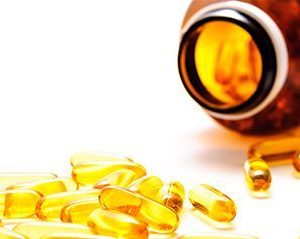- Understanding the Connection Between Anxiety and Depression
- How Daily Prunes Can Influence Cholesterol and Inflammation
- When to Take B12 for Better Absorption and Energy
- Epsom Salts: Health Benefits and Uses
- See What Saffron Can Do for Sleep and Heart Health
- 6 Common Mistakes to Avoid Before Your Physical
- Can Sweating Really Help You Beat a Cold?
- Strengthening Your Relationship: Practical Strategies
- Skip Storing This Everyday Product in the Fridge Door
- Green Tea + B3 Pairing May Boost Brain Health
Vitamin D: Good for Your Health, It Might Even Fight COVID-19

Vitamin D is an essential nutrient, and recent research has suggested it may also help guard against severe COVID-19.
But how much is enough, and how hard is it to get the right amount of vitamin D?
“We know that a large percentage of the population has suboptimal levels of vitamin D. In fact, as many as half of the U.S. population may be deficient in vitamin D,” said Kristin Gustashaw, clinical dietitian at Rush University Medical Center in Chicago. “This can possibly lead to symptoms including fatigue, tiredness, hair loss, delayed wound healing, decreased immune health, muscle pain and more, with no other known causes.
“Part of the difficulty of maintaining vitamin D levels is because there are not a large variety of foods that contain much vitamin D,” Gustashaw added in a medical center news release.
The vitamin is accessible to people through some foods, supplements and even sunshine.
Food sources include egg yolks, milk, cheese, beef or calf liver and certain fish, such as salmon, mackerel, tuna and sardines. Other foods are fortified with vitamin D, including certain cereals, breads, soy milk and orange juice.
Gustashaw also recommends that people should get out in the sun for at least 15 to 30 minutes a day, but says they should be sure to get a constant source of the nutrient from their diet and supplementation.
Adults should get a minimum of 600 IU of vitamin D each day and 800 IU if over age 70. Children should get 600 IU each day. And infants up to the age of 12 months should get 400 IU/day. Gustashaw says you can determine your vitamin D levels through a blood test.
If you do have low levels of vitamin D, it’s always best to talk to your health care provider or dietitian about the best way to boost your intake, Rush University experts said.
Certain medications can affect vitamin D absorption. These include steroids, the cholesterol-lowering drug cholestyramide, and the seizure medications phenobarbital and phenytoin.
While vitamin D toxicity is rare, there’s no proof that taking more than the upper limit of the recommended dosage is beneficial, the experts said. In some cases, excess amounts of vitamin D can lead to renal failure, calcification of soft tissues throughout the body, including in coronary vessels and heart valves, cardiac arrhythmias and even death.
More information
The U.S. Centers for Disease Control and Prevention has more on ensuring your kids get proper amounts of vitamin D.
SOURCE: Rush University Medical Center, news release, Jan. 22, 2021
Source: HealthDay
Copyright © 2026 HealthDay. All rights reserved.










